Recipe
Ingredients:
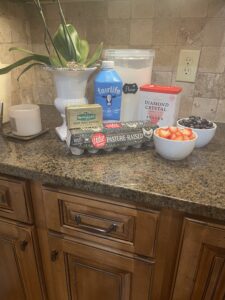 2 large eggs
2 large eggs
½ cup sifted flour
½ tsp. Salt
⅔ cup milk
1 tbsp. Sugar
1 stick of butter for pan
Toppings (fruit, whipped cream, powdered sugar, etc.)
Instructions:
Though this recipe is fairly easy to make, you will need a crepe pan to complete the cooking process.
First, sift your flour, sugar, and salt in a large mixing bowl and combine them. Pour your eggs in and whisk everything together.
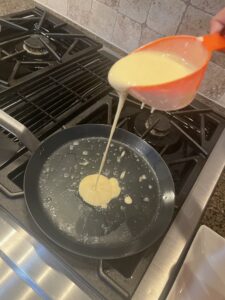 Gradually add your milk until the mixture is smooth.
Gradually add your milk until the mixture is smooth.
Leave the batter to rest in the fridge for about an hour. You can also leave it to rest overnight if you want the crepes to be softer.
When you are ready to make the mixture into crepes, heat your cepe pan on low to medium heat and coat in butter to prevent sticking. Pour some of the batter on the pan, using the tools that come with your pan to spread the batter into a thin layer and flip when bubbles form.
Add any toppings!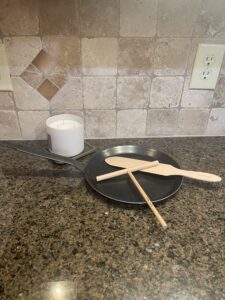
Family Significance:
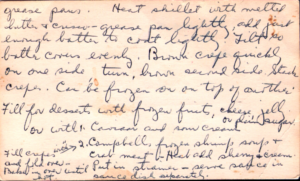 Once a year, on a Sunday in winter, my grandmother would make crepes for breakfast. She only made these crepes once a year because the process was labor intensive to make for multiple people. The recipe that she used was my great-grandmothers who inherited it from her parents. The recipe is titled “palachinka” which means crepe in Hungarian, where my great-grandmother’s ancestors emigrated from. Part of why making these crepes were so labor intensive is because my grandmother would use very small crepe pans, only about six inches. She would line up four of them and have them all going at the same time to make them as efficiently as possible. She would call her children in when she had a stack of them ready, and everyone would be waiting excitedly for her to announce that they could come get breakfast. A powdered sugar shaker would be on the table with the crepes and used to cover the crepes before they were rolled up and eaten quicker than they could be made. Her crepe pans have since been passed down to my uncle for his kids to enjoy, and my family now has our own crepe pan to start a tradition with.
Once a year, on a Sunday in winter, my grandmother would make crepes for breakfast. She only made these crepes once a year because the process was labor intensive to make for multiple people. The recipe that she used was my great-grandmothers who inherited it from her parents. The recipe is titled “palachinka” which means crepe in Hungarian, where my great-grandmother’s ancestors emigrated from. Part of why making these crepes were so labor intensive is because my grandmother would use very small crepe pans, only about six inches. She would line up four of them and have them all going at the same time to make them as efficiently as possible. She would call her children in when she had a stack of them ready, and everyone would be waiting excitedly for her to announce that they could come get breakfast. A powdered sugar shaker would be on the table with the crepes and used to cover the crepes before they were rolled up and eaten quicker than they could be made. Her crepe pans have since been passed down to my uncle for his kids to enjoy, and my family now has our own crepe pan to start a tradition with.
Cultural Significance:
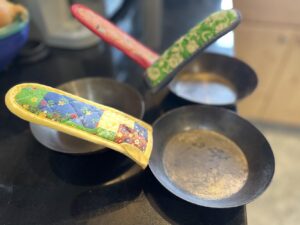 While this recipe isn’t necessarily jewish, it still has an interesting history in various different cultures. Palachinka has many spellings and names, due to it being present in so many Central and Eastern European countries. It originated in the Celtic period, in which it was baked on polished stones. Originating in the western French province of Bretagne and traveling through over twenty different European countries, leaving its mark in each one, makes this dish unique and notable.
While this recipe isn’t necessarily jewish, it still has an interesting history in various different cultures. Palachinka has many spellings and names, due to it being present in so many Central and Eastern European countries. It originated in the Celtic period, in which it was baked on polished stones. Originating in the western French province of Bretagne and traveling through over twenty different European countries, leaving its mark in each one, makes this dish unique and notable.

